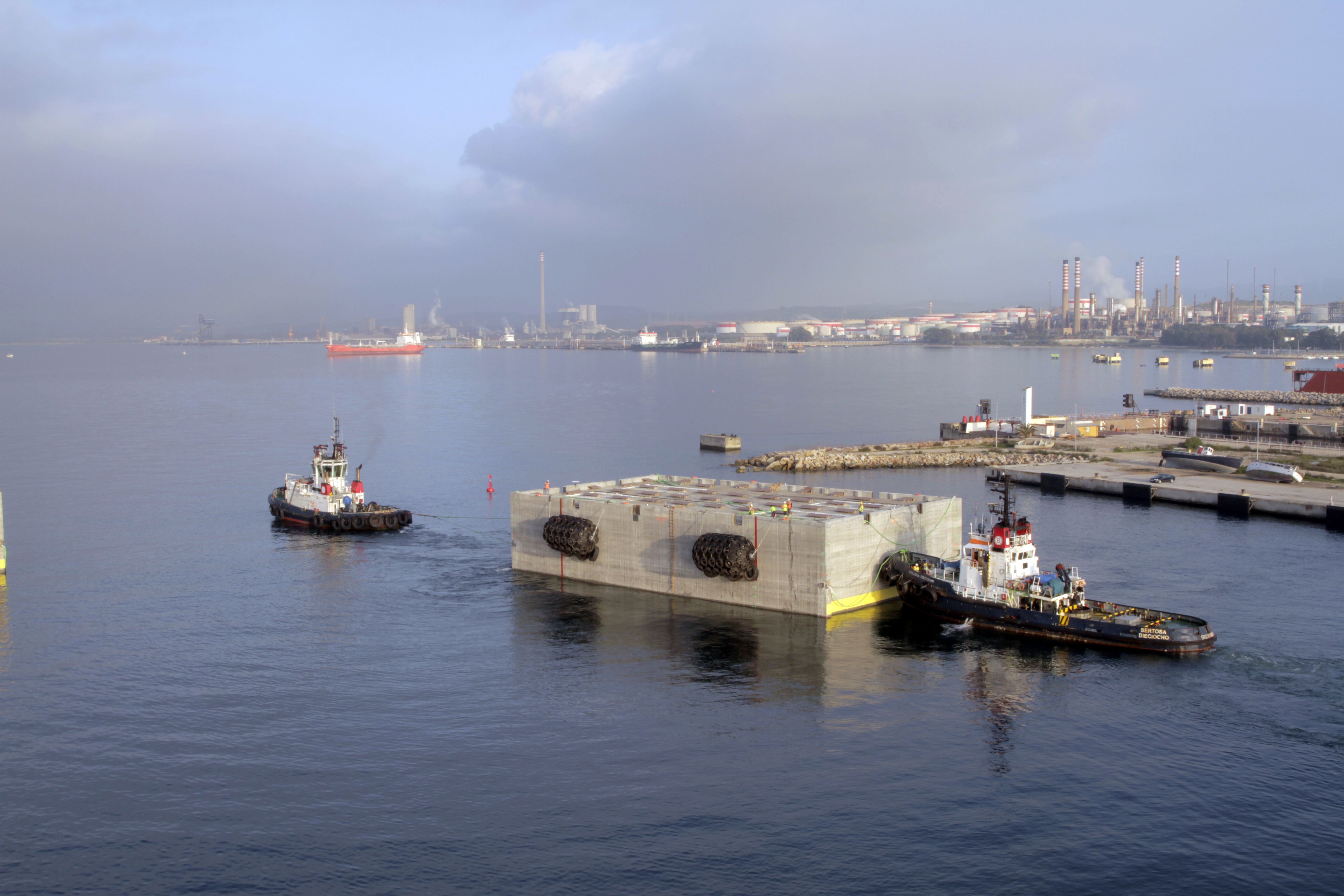FCC begins shipping of the first large components for Açu Port by sea from Algeciras to Brazil
FCC begins shipping of the first large components for Açu Port by sea from Algeciras to Brazil
- FCC will ship five reinforced concrete caissons with a volume of 3,722 cubic metres, weighing 9,871 tonnes
- The caissons will be shipped on a semi-submersible vessel measuring two football pitches long, which will travel almost 8,000 kilometres in 15 days

FCC has commenced preparations in Algeciras Port (Cádiz) to ship the first five caissons, which will serve as the foundation for construction work to begin in Açu Port, around 315 kilometres north of Río de Janeiro (Brazil). The rectangular caissons have a volume of 3,722 cubic metres of concrete, weigh 9,871 tonnes and will serve as the foundation of the new port in Brazil.
FCC's construction subsidiary is building 9 of the 49 reinforced concrete caissons which will serve as the foundation of Açu Port. The company chose Algeciras as the site to build the first components because of its draught, since the Açu facilities are not yet prepared to moor the caisson production vessels.
The caissons are 45 metres long, 24 wide and 18 high. Caisson loading requires an extremely high-precision manoeuvre given their size and the scant space between them (approximately 4 metres). They can only be moved with tugboats, with the result that any unfavourable sea and wind conditions could complicate the placement of caissons on deck.
The caissons will be loaded onto a Black Marlin semi-submersible vessel measuring 217.50 metres long (equivalent to two football pitches) with a beam of 42 metres. The five caissons will be transferred from the dock to the vessel using two tugboats and two support boats.
The Black Marlin will partially submerge to a depth of around 12 metres during the loading process and, once complete, it will broach the surface again. The caissons will then be secured to the deck using steel plates to impede movement during the journey.
The journey
The vessel will take 15 days to cover the 4,300 nautical miles (7,960 kilometres) between Algeciras and Río de Janeiro (Brazil). After passing through customs in Río, the caissons will be towed to São João da Barra and sunk in Açu Port to form the temporary breakwater behind which the Mar del Aneto and Mar del Enol caisson production vessels will be moored.
The 4 remaining caissons (of 9 in total) will be completed by mid-May and transported at the end of that month in a second journey along with the Mar del Aneto caisson production vessels. Construction of the caissons in Algeciras Port has generated more than 700 direct and indirect jobs.
Açu Port, the third-largest in the world
FCC heads the consortium that will complete this complex civil engineering project. The project includes the construction of a 2,438 linear metre dock to be executed by manufacturing 49 reinforced concrete caissons and a 600-metre dike. The contract also includes dredging more than 4.1 million cubic metres to attain an average depth of 31 metres, the dike superstructure works, and the provision of nautical equipment and buoys.
The port is located inside the Açu Superport industrial complex, which spans 90 square kilometres (2.5 times the size of Manhattan), and will comprise 2 terminals with 17 kilometres of pier and 40 berths, capable of receiving ships of up to 400,000 tonnes. As a result of this project, Açu will be the third-largest port in the world and the largest in the Americas, with an annual capacity of 350 million tonnes.
Experience in port construction
FCC has extensive experience in complex port projects, including the floating pier at La Condamine Port (Monaco). For the first time in engineering history, a pier was built in its entirety in a dry dock, in Algeciras Bay, and was floated to Monaco, where it was anchored and connected to land. There are 816 nautical miles (1,500 kilometres) separating Algeciras and Monaco, equivalent to a 12-day journey. FCC is currently building the chemical products terminal in Tarragona Port and the new container terminal in Cádiz Port, which will be completed in 2015.
FCC, the Citizen Services Company, has signed a contract to modernise Callao Port in Lima, the largest in Peru and one of South America's largest Pacific ports, for around 206.3 million dollars (around 165 million euro). The Callao contract is part of a very ambitious investment plan amounting to 1 billion dollars through 2020. The project will affect piers 5 and 11, which will measure 560 metres and 280 metres, respectively.








